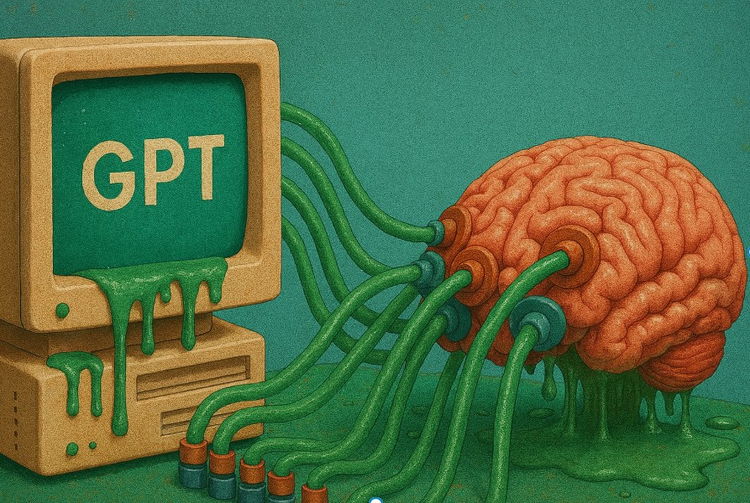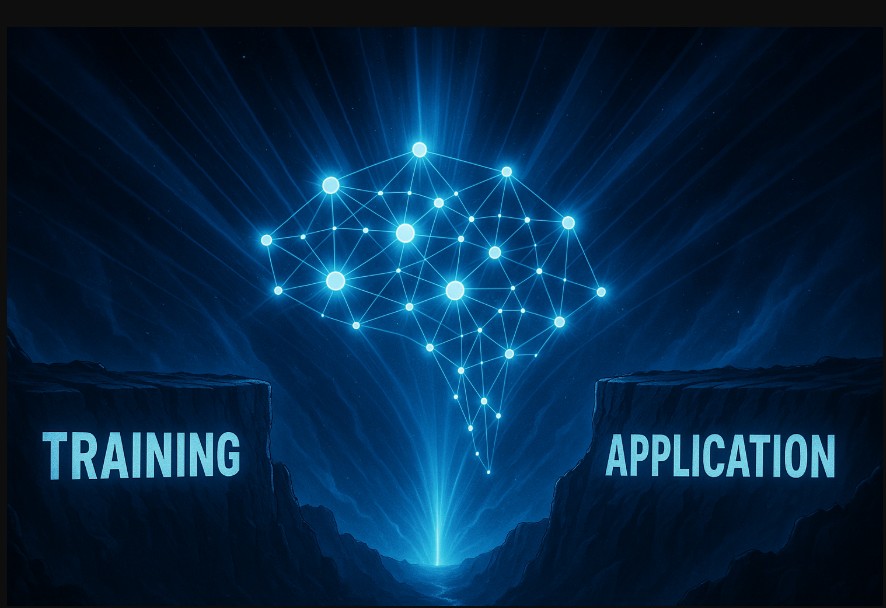
Memory at Work: The Hidden Power to Fight Brain Drain caused by AI Chatbots
Table of Contents
Companies aren’t failing to train, they’re failing to make training stick. The real AI readiness gap is memory, not modules.
You can certify all you want, but if no one remembers it, training doesn’t work. Bad memory is quietly killing your team’s performance.
It’s not the training that’s broken, it’s the forgetting that follows. Without memory, even world-class programs fail.
Organizations continue to invest in corporate training, but overlook the human brain. Memory failure is the silent leak draining ROI.
The best teams aren’t just training, they’re remembering. That’s the real competitive edge.
When Priya, a newly promoted engineering lead, sat through her fifth compliance training this quarter, she could not recall a single protocol from the previous training. The system had marked her as “certified,” but in a real-world crisis? She’d have nothing to rely on but ChatGPT, Google and guesswork.
Today’s workforce isn’t suffering from a lack of training, it’s suffering from a lack of retention. As organizations rush to reskill for the AI era, memory failure has quietly become the most significant barrier. It will quietly drain billions from employers worldwide. In high-stakes industries, that’s not just inefficient, it’s dangerous.
The recently published study by MIT researchers has shocked the internet and gone viral for a reason – people agree with the fact that extensive use of AI chatbots are draining our brain power. 83.3% of ChatGPT users couldn’t quote a single sentence from essays they wrote minutes earlier. Meanwhile, brain-only users had no problem recalling what they wrote. Brain connectivity collapsed from 79 to just 42. A ~47% drop in neural engagement. This was by far the lowest of any group. In fact, even when ChatGPT users were forced to stop using it in a later session, their brains still showed under-engagement. They performed worse than those who never used AI at all. It’s not just dependency. It’s cognitive atrophy. Like a muscle that’s forgotten how to work. And it wasn’t just the brain scans. Their essays scored well but felt empty. Teachers called them “soulless,” “lacking insight,” and “robotic”. The productivity paradox nobody talks about: Yes, ChatGPT makes you 60% faster at completing tasks. But it reduces the “germane cognitive load” needed for actual learning by 32%.

The Rising Stakes of Learning in the AI Age
Companies everywhere continue to help workers learn new skills. Even though they’re spending a lot of money on training, the real problem isn’t getting the information, it’s knowing it. As more training programs grow, rapidly forgetting what you learn continues to become the biggest reason people can’t keep up.
By 2026, over 90% of organizations are expected to be impacted by skills shortages, with losses exceeding $5.5 trillion, according to IDC. While companies continue to invest in training infrastructure, what often goes unaddressed is the invisible barrier that stands between employees and the application of that knowledge: human learning and memorisation skills.
In fact, a staggering 90% of information is forgotten within the first 7 days, according to the Ebbinghaus forgetting curve and reinforced by contemporary workplace learning studies from the National Training Laboratories and LinkedIn Learning. Employees are eager to learn, with 94% expressing willingness (Accenture, 2024), but only 5% of companies are reskilling at scale (McKinsey, 2024). The bottleneck? Cognitive overload and the absence of the skills and tools to transfer needed information from short-term into long-term memory, to then keep it as your knowledge.
Why Cognitive Performance Now Defines Workforce Readiness
As AI moves into every part of the workplace, this challenge is only getting harder. The speed of change is overwhelming, and many employees simply can’t keep up with the amount of new information. Researchers are now warning that memory, not motivation, is the missing link in most training programs. As research referenced below shows, real learning doesn’t happen unless people can remember and use what they’ve learned.
According to Deloitte’s 2024 Human Capital Trends, the growing pace of AI implementation is widening the gap between information delivery and cognitive processing. Their research indicates that organizations need to focus not only on digital fluency but on cognitive preparedness. “The ability to absorb and retain new knowledge,” Deloitte notes, “has become a fundamental requirement for workforce agility.”
Meanwhile, Mercer’s 2024 Global Talent Trends Report highlights the tension between speed and depth of learning. Organizations are moving toward skills-based models, but Mercer cautions that “skills without cognitive foundations are fragile.” In other words, the shelf life of new skills remains short unless embedded through memory-enhancing practices. In their collaboration with healthcare clients, Mercer reported a 30% uptick in patient safety compliance when memory reinforcement was added to standard training.
Taken together, these findings demonstrate a powerful insight: memory and cognitive performance aren’t just individual traits – they’re the infrastructure of high-performing, AI-ready organizations.
For L&D and HR teams, this presents a dual challenge: enabling teams to absorb rapidly shifting market knowledge and helping customer-facing roles recall and apply key messaging with fluency.

The Memory Gap No One Talks About
The human brain, not the learning platform, is the constraint. Learning fatigue, fragmented information delivery, and the absence of effective learning and retrieval methods all converge to create a crisis in memory retention. Even the most robust L&D systems falter if the human mind isn’t engaged appropriately.
Employees like Priya may leave training with a certificate, but just in a week will lose over 90% of the new knowledge and will have no confidence, and capability to apply it when the time comes. It’s a disconnection between learning and knowing, and it begins with how memory is treated in workforce strategy.
Nearly 2,500 years ago, the Greek poet Simonides survived the collapse of a banquet hall. In the aftermath, he identified the deceased solely by recalling where each person had been seated. That moment gave birth to the memory palace technique – a spatial method for storing and retrieving information that became the cornerstone of classical memory systems.
It seems Priya may be tapping into her heritage and rediscovering this ancient art of retention.
Used by philosophers, scientists, and statesmen, this method wasn’t about rote memorization, it was about creating mental architecture. Today, these principles are making a return, not as relics, but as tools tailor-made for the digital age.
The Cognitive Revolution: From Ancient to AI-Era Tools in the modern workplace, platforms that blend neuroscience with technology are redefining what learning can look like. These approaches aim to cultivate whole-mind learning, focusing not just on what is learned, but how it is retained and applied:
- Microlearning embedded within daily workflows
- Adaptive coaching that adjusts to cognitive readiness
- Gamified strategies, including memory palaces and spaced repetition
memoryOS, brings these ancient memory architectures to life in a digital-first environment. Leveraging visualization and structured encoding, users report up to 70% improvement in retention, not just of facts, but of usable knowledge that withstands stress and complexity, measured through user performance metrics built into the app tracking improvements in recall accuracy, speed, and consistency over time. Based on a group of over 4153 participants aged 17 to 60 (who took a pre-test, then completed initial lesson experiences within the app and then did a post-test) – memoryOS provided a rapid increase for 73% of users, improving their recall precision by 73% and recall speed by 57%.
How Memory Enhancement Powers Business Strategy
When memory is strengthened, everything else accelerates. Consider the impact across the organization:
- Faster Reskilling: Technical teams more easily internalize evolving code frameworks, compliance protocols, and AI tools.
- Digital Fluency: Learning curves shrink as employees adapt to new software and interfaces with reduced friction.
- Regulatory Confidence: Teams maintain a high recall of procedures, decreasing compliance risks.
- STEM Performance: Cross-functional R&D becomes more fluid as memory enhances systems thinking and conceptual linkage.
- Accelerated Onboarding: New employees feel equipped and engaged far earlier in their journey.
From Learning Events to Learning Cultures
Most organizations treat training as an event: a one-time transfer of knowledge. But the most successful companies are evolving toward learning cultures and systems where knowledge is retained, retrieved, and reapplied continuously.
That shift requires recognizing memory not as a passive result, but as an active skill. Supporting memory development isn’t a luxury; it’s a necessity in an economy where skills evolve faster than curriculum.
Organizations that integrate memory enhancement into their L&D strategy stand to:
- Shrink time-to-competency across roles
- Improve accuracy and reduce rework
- Boost innovation through cognitive confidence
- Build resilience against talent shortages
In the current era, where AI writes code, automates workflows, and creates new demands almost daily, the most human capabilities – effective learning skills, structured memory – are emerging as a key strategic differentiators.
Recent insights from Deloitte, McKinsey, Mercer, and LinkedIn underscore this: the ability to get desired knowledge is not enough – what matters is the ability to retain and apply that knowledge at speed and under pressure.
Forward-looking organizations will recognize memory as a scalable, trainable asset that underpins performance, agility, and transformation. Memory techniques aren’t a return to rote – they are a forward-facing approach to building resilience, mental agility, and adaptability.
Because ultimately, in the race to reskill, the companies that learn and remember best will also lead best.
The biggest barrier to “Memory at Work” isn’t a lack of training, it’s that people forget what they learn very fast. As companies strive to teach new skills, they’re missing the one thing that makes learning stick, memory. Research shows that most workers forget 70% of training in just one day, and with AI speeding everything up, remembering what you learn has never been more important. Memory is the hidden power behind real growth, smart decisions, and staying ready for change. If companies want to lead the future, they have to help people remember what they learn better.